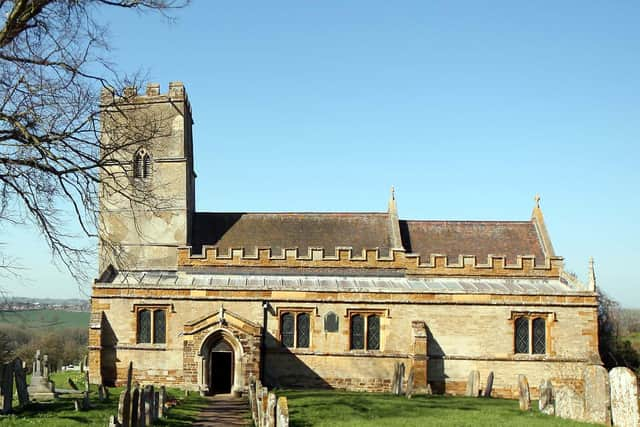Boost for major project to restore historic Northamptonshire church will help bring it to life
and live on Freeview channel 276
A major project to restore a Northamptonshire church built by the Saxons and bring its rich history to life has been given a boost.
Around £250,000 is being spent on repairing St Michael's Church in Church Stowe, including the Grade 1 listed tower which is national importance.
Advertisement
Hide AdAdvertisement
Hide AdStowe Nine Churches PCC has received a National Lottery Heritage Fund grant of £96,400 to support its scheme.


Churchwarden Stephen Henley said: “We are delighted to have received this support thanks to National Lottery players.
"We are excited to restore such an important local ‘treasure’ and attract children and adults to the village to learn more of its unique heritage.”
The project will repair the church's Saxon tower - unique for its height - as well as restoring the church bells, one of which dates from 1390.
Advertisement
Hide AdAdvertisement
Hide AdThe grant will also enable structural repairs to the church walls and roof to look after some of the important sculptures inside, including the memorial to Lady Elizabeth Carey created by Nicholas Stone.
New 'interpretation materials' will also be installed, such as apps, storyboards and guides to more effectively tell the church's story to visitors of all ages.
In addition, a series of choral, artistic and educational events will help to celebrate the history of St Michael’s and the surrounding area.
Church Stowe is widely considered to be the location for the Battle of Watling Street where Queen Boudica was defeated by the Romans in AD 60.
Advertisement
Hide AdAdvertisement
Hide AdThe area was also the site of an Anglo-Saxon cult in 700, the home of Catherine Parr, the only surviving wife of Henry VIII, and radar was demonstrated for the first time in the village in 1935, ultimately playing a major role in the Second World War.